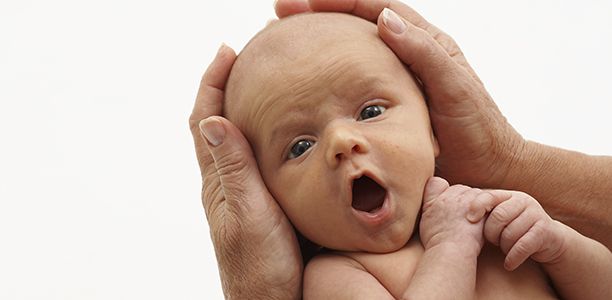An international study by child health researchers has found that genetic factors contribute to the development of language during infancy.
The results, published in Nature Communications, shed further light on a specific genetic region on chromosome 3, which has been previously implicated in dyslexia and speech-related disorders.
The research group, which included The University of Western Australia affiliated Telethon Kids Institute and University of Bristol, discovered a significant link between genetic changes near the ROBO2 gene and the number of words spoken by children in the early stages of language development.
UWA’s Winthrop Professor Andrew Whitehouse said the study used data from five samples including Perth’s Raine study, which has been run by the Institute since the late 1980s.
“The data helped researchers to better understand the genetic factors involved in early language development in healthy children, and strengthened the link between ROBO proteins and a variety of linguistic skills in humans,” Professor Whitehouse said.
The ROBO2 gene contains the instructions for making the ROBO2 protein. This protein directs chemicals in brain cells and other neuronal cell formations that may help infants to develop language but also to produce sounds. The ROBO2 protein also closely interacts with other ROBO proteins that have previously been linked to problems with reading and the storage of speech sounds.
Professor Whitehouse said the team found the genetic link during the ages of 15 to 18 months when toddlers typically communicate using only single words.
“Children start talking single words at about 10 to 15 months of age before their linguistic skills advance to two-word combinations and more complex grammatical structures,” he explained.
“Their range of vocabulary expands from around 50 words at 15 to 18 months, to 200 words at 18 to 30 months, more than 14,000 words at six-years-old and then over 50,000 words by the time they leave secondary school.”
The study was carried out by an international team of scientists from the Early Genetics and Lifecourse Epidemiology Consortium (EAGLE) and involved data from over 10,000 children.
The study used data from five samples – the Bristol-based Avon Longitudinal Study of Parents and Children (ALSPAC), the Generation R Study (GenR) in Rotterdam, the Northern Finland Birth Cohort 1966 (NFBC1966), the Raine study in Perth, Australia, and the UK-wide Twins Early Development Study (TEDS).
You can read the full publication here: ‘Common Variation Near ROBO2 is Associated with Expressive Vocabulary in Infancy’ by St Pourcain et al in Nature Communications.
(Source: The University of Western Australia, Nature Communications)











